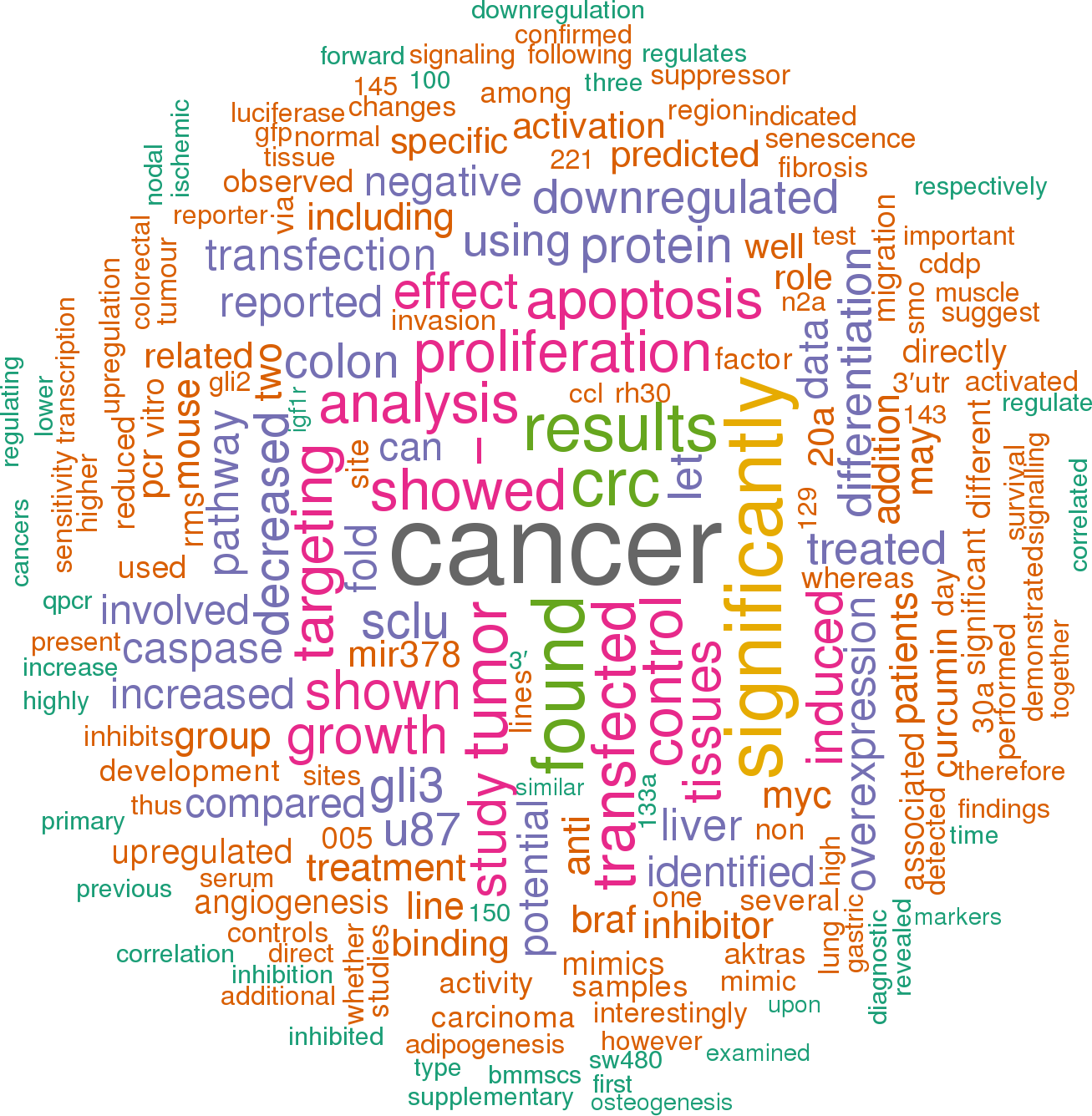Accession
MI0000786
Symbol
HGNC:
MIR378A
Description
Homo sapiens
hsa-mir-378a precursor miRNA
Summary
Caution, this is an AI generated summary based on literature. This may have errors. ?
Hsa-mir-378, a microRNA, is located on chromosome 5q32 and is variably annotated as MIR-378, MIR 378, miRNA378, hsa-mir-378, and hsa-mir-378a [PMC8071157]. The results from various programs have identified potential targets of hsa-mir-378 and another microRNA, hsa-miR-1827; these findings were consolidated using the Venny v2.1 online tool [PMC5771341].
Literature search

212 open access papers mention hsa-mir-378a
(1262 sentences)
(1262 sentences)
Sequence
5214209
reads,
6859
reads per million, 154 experiments
agggCUCCUGACUCCAGGUCCUGUGUguuaccuagaaauagcACUGGACUUGGAGUCAGAAGGCcu
(((.((.((((((((((((((.((((..(........)..)))).)))))))))))))).)).)))
(((.((.((((((((((((((.((((..(........)..)))).)))))))))))))).)).)))
Structure
g C U gu acc agg CU CUGACUCCAGGUCC GUGU u u ||| || |||||||||||||| |||| | ucC GA GACUGAGGUUCAGG CAcg a a G A U au aag
Annotation confidence
High
Do you think this miRNA is real?
Comments
miR-422b was the most abundant miRNA cloned from human promyelocytic leukemia (HL-60) cells [2]. The sequence originates from the opposite arm of the human homologue of previously identified mouse mir-378 [1]. Landgraf et al. show that the 3' product (previously called miR-422b) is the predominant one [3]. Further, mir-378 and mir-422a loci are unrelated. miR-422b is thus renamed miR-378 here.
Genome context
chr5: 149732825-149732890 [+]
Disease association
hsa-mir-378a is associated with one or more human diseases in the Human microRNA Disease Database
| Disease | Description | Category | PubMed ID |
|---|
Biological pathways
hsa-mir-378a is involved in one or more biological pathways:
(Source: Reactome)
(Source: Reactome)
Biological reactions
hsa-mir-378a is involved in one or more regulation/signalling events:
(Source: Reactome)
(Source: Reactome)
Mature hsa-miR-378a-5p
| Accession | MIMAT0000731 |
| Description | Homo sapiens hsa-miR-378a-5p mature miRNA |
| Sequence | 5 - CUCCUGACUCCAGGUCCUGUGU - 26 |
| Evidence |
experimental
cloned [3] |
| Database links |



|
| Predicted targets |



|
Mature hsa-miR-378a-3p
| Accession | MIMAT0000732 |
| Description | Homo sapiens hsa-miR-378a-3p mature miRNA |
| Sequence | 43 - ACUGGACUUGGAGUCAGAAGGC - 64 |
| Evidence |
experimental
cloned [2-3], Northern [2] |
| Database links |



|
| Predicted targets |



|
References
|




